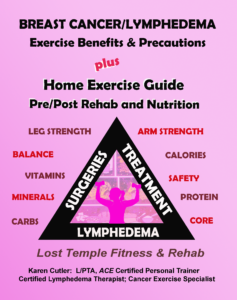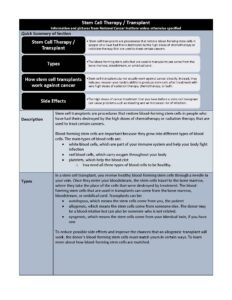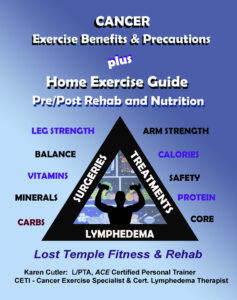What is
Stem Cell Therapy / Transplants
Your Body is Your Temple
Research, Resources & Education
Table of Contents
Stem cell transplants are procedures that restore blood-forming stem cells in people who have had theirs destroyed by the high doses of chemotherapy or radiation therapy that are used to treat certain cancers..
Information from the National Cancer Institute unless otherwise specified
Main Type of Blood Cells
Blood-forming stem cells are important because they grow into different types of blood cells. You need all three types of blood cells to be healthy.
The main types of blood cells are:
White Blood Cells
Red Blood Cells
Platelets
Stem Cell Videos
YouTube Videos that help explain Stem Cell Therapy.
Disclaimer:
This is for research only and Lost Temple Fitness & Cancer does not endorse any video presented on this website.
It is advised that you ALWAYS CHECK WITH YOUR PHYSICIAN for a proper diagnosis and treatment plan.
How Transplants Work and Types
- In a stem cell transplant, you receive healthy blood-forming stem cells through a needle in your vein.
- Once they enter your bloodstream, the stem cells travel to the bone marrow, where they take the place of the cells that were destroyed by treatment.
- The blood-forming stem cells that are used in transplants can come from the bone marrow, bloodstream, or umbilical cord.
- To reduce possible side effects and improve the chances that an allogeneic transplant will work, the donor’s blood-forming stem cells must match yours in certain ways.
- Autologous, which means the stem cells come from you, the patient.
- Allogeneic, which means the stem cells come from someone else. The donor may be a blood relative but can also be someone who is not related.
- Syngeneic, which means the stem cells come from your identical twin, if you have one.
How Stem Cell Transplants Work Against Cancer
Stem cell transplants do not usually work against cancer directly. Instead, they help you recover your body’s ability to produce stem cells after treatment with very high doses of radiation therapy, chemotherapy, or both.
- In multiple myeloma and some types of leukemia, the stem cell transplant may work against cancer directly.
- This happens because of an effect called graft-versus-tumor that can occur after allogeneic transplants.
- Graft-versus-tumor occurs when white blood cells from your donor (the graft) attack any cancer cells that remain in your body (the tumor) after high-dose treatments.
- This effect improves the success of the treatments.
- Stem cell transplants are most often used to help people with leukemia and lymphoma.
- They may also be used for neuroblastoma and multiple myeloma.
Side Effects
The high doses of cancer treatment that you have before a stem cell transplant can cause problems such as bleeding and an increased risk of infection. Talk with your doctor or nurse about other side effects that you might have and how serious they might be.
If you have an allogeneic transplant, you might develop a serious problem called graft-versus-host disease.
- Graft-versus-host disease can occur when white blood cells from your donor (the graft) recognize cells in your body (the host) as foreign and attack them.
- This problem can cause damage to your skin, liver, intestines, and many other organs.
- It can occur a few weeks after the transplant or much later.
- Graft-versus-host disease can be treated with steroids or other drugs that suppress your immune system.
- The closer your donor’s blood-forming stem cells match yours, the less likely you are to have graft-versus-host disease.
- Your doctor may also try to prevent it by giving you drugs to suppress your immune system.
Disclaimer: The information in this book/website is for educational purposes only and has been obtained through research, publications and personal experience, and shall not be liable for incorrect information. Any mentioned publications or websites does not imply endorsement. As this industry is ever changing, I urge readers to confirm the information contained in this book/website. The author will not be liable for any injuries sustained from practicing techniques taught or for any typographical errors or omissions.
It is advised that you always check with your medical doctor or physical therapist before starting an exercise program or change in diet.
|
Information and pictures from National Cancer Institute unless otherwise specified |




